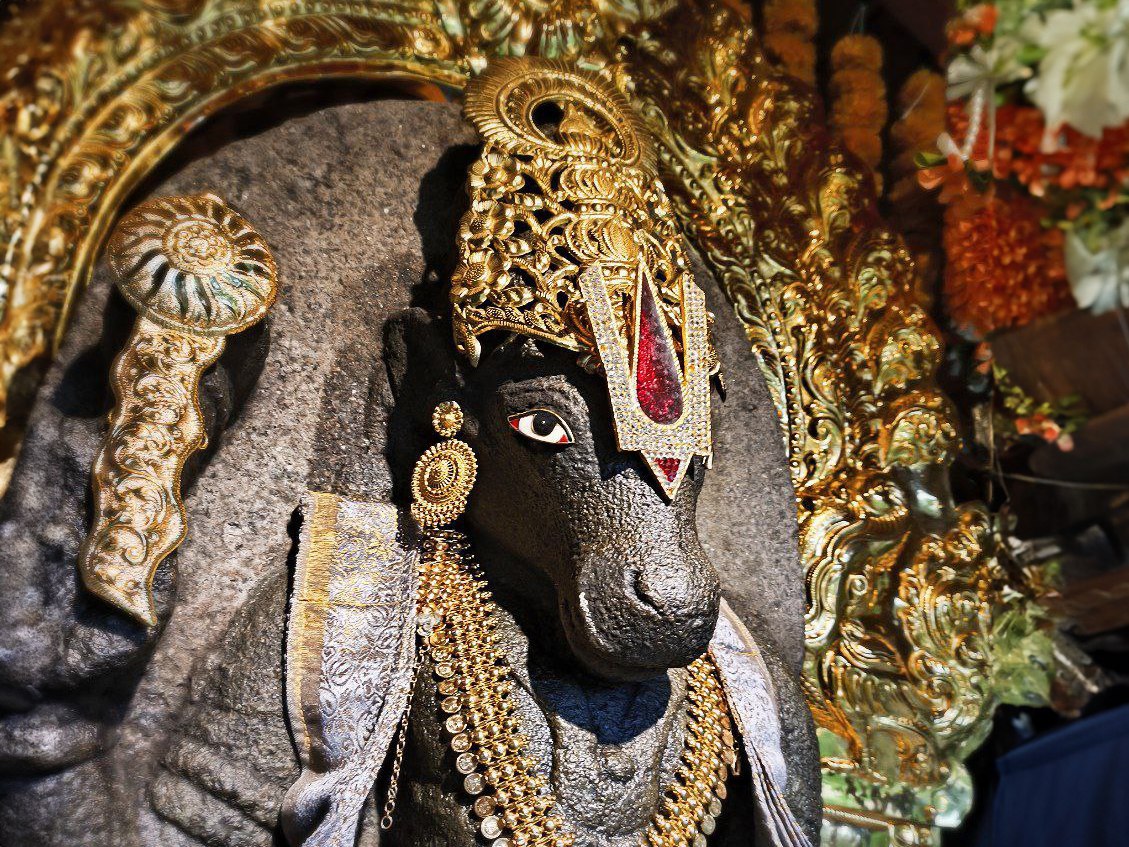
LORD VARAHA´S LILAS


MEETING GOD AT OUR LOWEST
Rishi Jagadish’s journey with Bhakti Marga began around 2014–15 when his mother first heard about Guruji through a bhajans group in their hometown. She was instantly drawn to the music and began attending their sessions, singing bhajans even though she didn’t fully understand what it was about—it simply came from her heart. Through this group, she connected with Guruji’s saṅgha, Bhakti Marga, and eventually attended a Darshan.
Not long after meeting Guruji, Jagadish’s parents separated. Their relationship had already been strained, but this marked a fresh start for his mother. Suddenly, their home was filled with Guruji’s pictures, she was singing bhajans, chanting mantras, and had become vegetarian almost overnight.
From Jagadish’s perspective, it was shocking and even frightening. He couldn’t understand what was happening, and he resisted it. A few months later, his sister also joined their mother in following Guruji.
“For many years, I wanted nothing to do with it. I was angry and uninterested. While they deepened their devotion, I lived away at university, disconnected from their lifestyle and unaware of how much they were changing.
After finishing university, I returned to my hometown with plans to pack my things and travel for a year. It was March 2020. But just as I prepared everything, COVID struck, and within days, the entire world went into lockdown.
Suddenly, after years apart, I was stuck at home with my mother and sister, now completely transformed devotees. The fear of the pandemic outside was matched by inner turmoil between us, as I still couldn’t understand what they were experiencing.”
Meanwhile, through his sister, Jagadish met a girl who became his girlfriend—she, too, was a devotee. Surrounded by devotees, he reached a point where he thought: either they were all crazy, or there was something real that he was unable to see. He considered himself rational, yet it struck him as irrational to dismiss everything without even trying to experience it.
Encouraged by his girlfriend, Jagadish decided to try an online Darshan during lockdown. At first, he didn’t feel much. But soon after, his girlfriend unexpectedly broke up with him. Seeking relief from the pain, he turned toward spirituality, becoming increasingly drawn into Guruji’s world.
“A month later, I attended a second online Darshan during one of the lowest points in my life. Immediately afterward, I felt a surge of restless energy and did pull-ups in my room. The pull-up bar broke, and I fell, injuring my knee badly. At the hospital, amid strict COVID protocols, I tested positive for the virus and was isolated in a ward surrounded by seriously ill patients. It was surreal. I broke down in tears, wondering what was happening to my life.
After surgery, I spent months recovering at home, forced to confront deep existential questions I’d never considered before. During this time, my sister joined weekly Zoom sessions led by Swami Akash for young devotees in Italy. Bored and immobilized, I joined too. We studied the Bhagavad Gita in a light-hearted, friendly environment, very different from the strict, monastic image I had imagined.
My curiosity grew. I even studied the Gita on my own, partly to challenge and refute what I heard. Yet the more I read, the more it resonated deeply. For months, I connected with the group, until lockdowns lifted in mid-2021.”
In July 2021, Jagadish’s mother and sister planned to attend the Just Love Festival in Germany. For the first time since 2015, he agreed to join them. The festival was vibrant, joyful, and nothing like what he expected. Through Swami Akash, Jagadish had the chance to speak with Guruji directly. Unsure of what to ask, he requested advice about his future: should he continue his master’s degree in physics or find a job? Guruji smiled and said, “You should come here to the āśrama.”
“Fear struck me. I looked around and saw monks and nuns, thinking coming here meant renouncing everything and becoming a monk. I declined, saying, “No, thank you.” Guruji just gave me a warm and loving smile in response.
As we left the āśrama, I felt a sharp pain in my heart, inexplicably crying as though I’d lost something vital. Back home, my mother explained the concept of sevā —volunteering at the āśrama —to clarify my path. I agreed to try it.
I arrived during Navaratri 2021, intending to stay a month. Since then, I’ve never left.”
Soon after, Jagadish felt drawn to temple service and became a pūjārī, serving Lord Varāha. At first, he was puzzled: Varāha, with His boar form, was unlike the deities he had imagined serving, such as Lord Kṛṣṇa or Mahā-Lakṣmī. But Guruji chose Lord Varāha for him. Over time, he realized how intimate this service was. Lord Varāha’s līlā —rescuing Mother Earth from the cosmic ocean—mirrored Jagadish’s own journey: God meets us at our lowest point, lifts us up, and transforms us.
Serving Lord Varāha outside in the freezing winters was difficult. Water froze during abhiṣeka, and Jagadish often struggled barefoot. Eventually, Guruji allowed them to bring the utsava mūrti indoors during winter. His compassion was constant, even in small details, like gifting them special shoes to use in the mandira outside.
Jagadish’s bond with Lord Varāha deepened. Though he knew the deity and Guruji were one, Lord Varāha became his refuge during challenging moments with Guruji. He confided in Him, even complaining at times, and always felt uplifted. Watching Lord Varāha’s gaze toward Bhū-devī reminded him of Guruji’s tender love for every soul.
Interestingly, Guruji once said that serving Lord Varāha with devotion could lead to liberation. Inspired, Jagadish’s mother bought what she thought was a Lord Varāha deity—only to discover it was Hayagrīva! They still laugh about it, a sweet reminder that shortcuts don’t work with Guruji or God.
“Lord Varāha also taught me acceptance. Initially, I longed to serve Lord Kṛṣṇa or Mahā-Lakṣmī, but Guruji gave me Lord Varāha, who became my greatest teacher. His earthy form stripped away my fantasies and attachments, grounding me in simplicity and love.
Ultimately, I realized that what we truly seek is love itself, beyond any form or preference. Whether through Guruji, Lord Varāha, Lord Kṛṣṇa, or any deity, love is the essence. Accepting what Guruji gives us—trusting it’s exactly what we need—has been my greatest lesson.
Love is love. It’s the highest experience of life, and it’s always right in front of us when we stop chasing what we imagine and embrace what is.”


FROM SEEKING TO SERVING
“I didn’t come here expecting much. I just knew I wanted to become a monk. That desire was clear, even though I hadn’t fully embraced any particular spiritual path. I had explored a little—some exposure to Hinduism, but nothing concrete. Buddhism had been my main influence, especially the meditative aspect. But something deeper was calling, and that’s what brought me here.
At first, I had no idea about Guruji or what this place was about. I came as part of a larger search—visiting different spiritual communities. But here, I began to hear stories about Guruji, and something about it drew me in. I felt I needed to meet Him. He wasn’t here at the time, but later, I did meet Him. By then, it was already clear to me—I wanted to stay. I asked if I could remain longer. He said yes and I never left.”
The world of rituals and deities was completely new to Varundas. He hadn’t grown up with religion, so witnessing the various forms and the deeply personal nature of worship felt a bit strange. But he remained open. He took a pūjā course and loved it. Shortly after receiving his iṣṭadeva, he bought a mūrti and began performing daily abhiṣeka in private. It became a form of meditation through action.
Recognizing Guruji as his Guru took more time than the decision to become a brahmacārī. The desire to live a monastic life was already present, but the personal connection to Guruji emerged later—quietly and unexpectedly while he was standing before Gāyatrī-devī mūrti during a time when Guruji was away in Mauritius.
“I felt an overwhelming love. It wasn’t mental or logical. It was a deep inner knowing. That moment helped me open to the path of devotion.
As I settled into the rhythm of life here, things changed. There’s a danger in getting too caught up in duty—doing sādhana and sevā without remembering why. I lost touch with the inner silence I once had through meditation. Lately, I’ve been working to reconnect with that. Not abandon service but bring purpose back into it.”
Serving Lord Varāha became part of Varundas’s journey.
The story of Lord Varāha’s mūrti is special. Originally from India, the mūrti was hidden underground during the Muslim invasions to protect it. Some decades ago, during road construction, it was unearthed and somehow made its way to a shop in Belgium. Guruji once saw the mūrti there and wanted it, but the owner refused. Years later, a devotee managed to acquire it and offered it to Guruji. The mūrti remained stored and hidden for about a year before finally being installed.
Varundas became Lord Varāha’s pūjārī somewhat unexpectedly. During a retreat in Lanzarote, he had just become a brahmacārī and asked Guruji if he should get a śikha. Guruji replied, “Only if you want to serve in the temple.” Varundas then asked, “Can I serve?” Guruji explained that all the deities were already being served—except Lord Varāha who would be installed soon. So Varundas waited, and when the time came, he was ready.
“When Lord Varāha`s mūrti was installed, I surprisingly felt no stress. I had imagined having a big role, but my part was simple—pouring water, offering rice. The only time I felt unsure was during āratī, when I realized I didn’t know the proper movements. Thankfully, Swami Aniruddha stood beside me, quietly whispering instructions and guiding me through.
Lord Varāha is different. I don’t pray to Him or ask for anything—He isn’t my iṣṭadeva. Serving Him feels like pure sevā. That’s our relationship: no negotiations, no personal requests, just showing up and doing what’s needed. There’s a calm, neutral presence about Him, almost as if He has no expectations.”
A small līlā unfolded around Varundas. One day, while watching a livestream from a temple in Mauritius, he was struck by how beautifully the altars were decorated. He thought to himself, “Varāha’s altar needs something—an arch behind him.” Not wanting to trouble anyone, he considered buying one on his own and felt a few hundred euros would be manageable.
Later, while Guruji was in Vrindavan, Varundas asked someone traveling with Him to keep an eye out in the shops for something appropriate to purchase. Then, one afternoon, Varundas received a video call—and there was Guruji, holding a small golden arch. Guruji said, “Send me the measurements.” Sometime later, the perfect arch was crafted in South India and installed at Lord Varāha`s altar.
“I only had the thought—He made it happen.
That’s often how it is with Guruji: quiet grace, silent orchestration.
The hardest part of āśrama life? The people. You don’t get to choose who you live or serve with. Guruji places you with those through whom you’ll grow. In the outside world, you can leave a job, take time off, or get paid. Here, it’s all sevā —an offering. But if you’re not mindful, conflict can creep in and taint that offering.
So you learn. And you serve. Even when no one is watching. Especially when no one is watching.
That’s the essence of Lord Varāha. He came, did what was needed, and left. Quiet. Effective. Complete.
Just like that.”


Serve those who serve us all!
Bhutabhrteshwarnath Mandir is a place where we come together to pray and grow in our spiritual journeys. The rituals and prayers help us feel closer to the Divine and remind us of our faith. If you feel a calling to deepen your relationship with the Divine, one way to do this is to support our temple. Join our donation program with the link below and help us continue the wonderful work of our beloved Gurudev. Together we can spread the grace of the Lord and bring more positivity to the world!
“By this, may you nurture the gods, and in return the gods will nurture you. In this way, nurturing one another, you will obtain the highest good.” Bhagavad Gita, Chapter 3, Verse 11

Rewatch Guruji`s beautiful Satsang:

“Allow Lord Varāha, just as He lifted Mother Earth, to lift you and raise you from the mūlādhāra, from the state of ignorance, to the sahasrāra.”
All Blog Posts
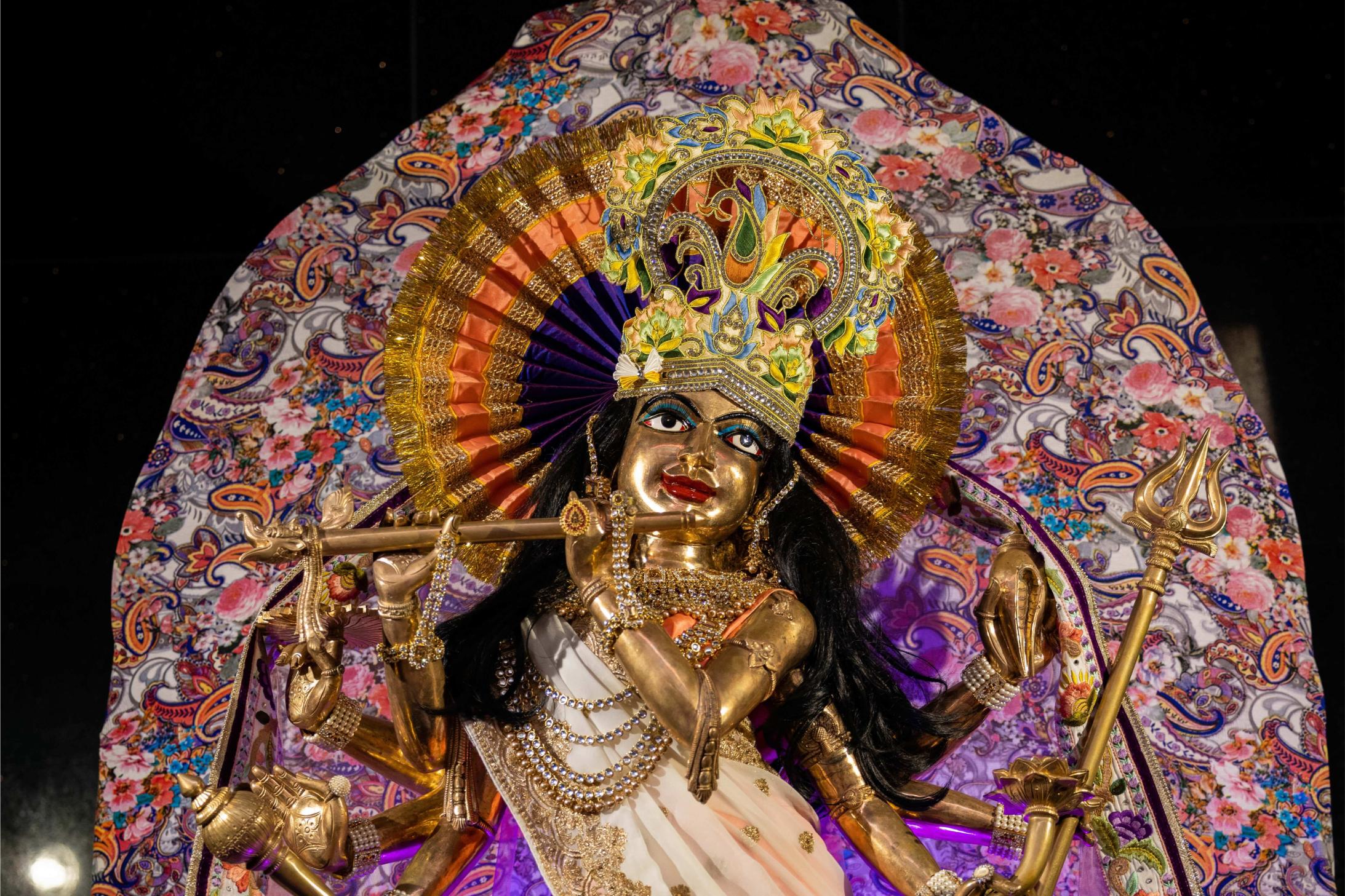
Radha Durga’s Lilas
Rādhā-Durgā is a rare and mystical form, worshipped for the first time as a divine manifestation of Rādhā appearing as Durgā.
January 2026
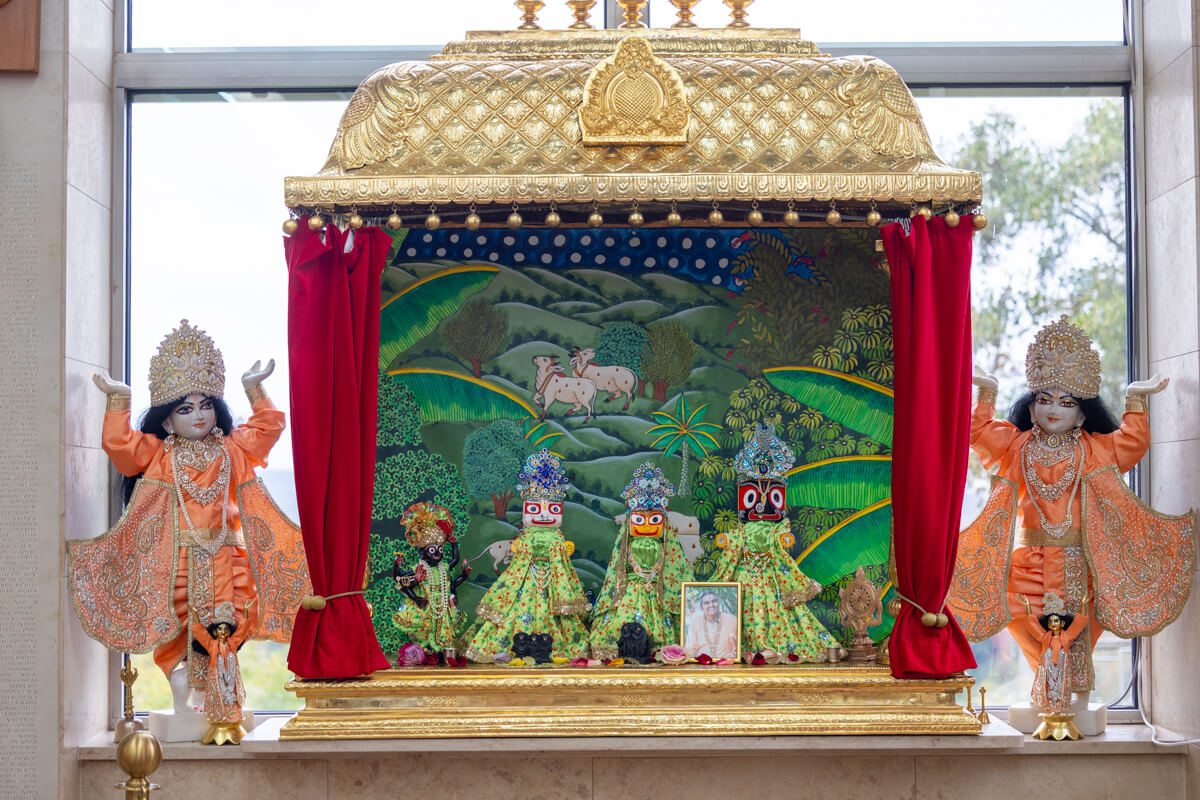
Sri Jagannatha and Gaura Nitai’s Lilas
Śrī Jagannātha, a manifestation of Śrī Kṛṣṇa Himself, embodies the all-embracing form of God who offers His love and mercy to everyone, regardless of background.
November 2025

Lord Varaha`s Lilas
Lord Varāha is a boar incarnation of Bhagavān, particularly renowned for His act of saving Mother Earth from the demon Hiraṇyākṣa.
September 2025
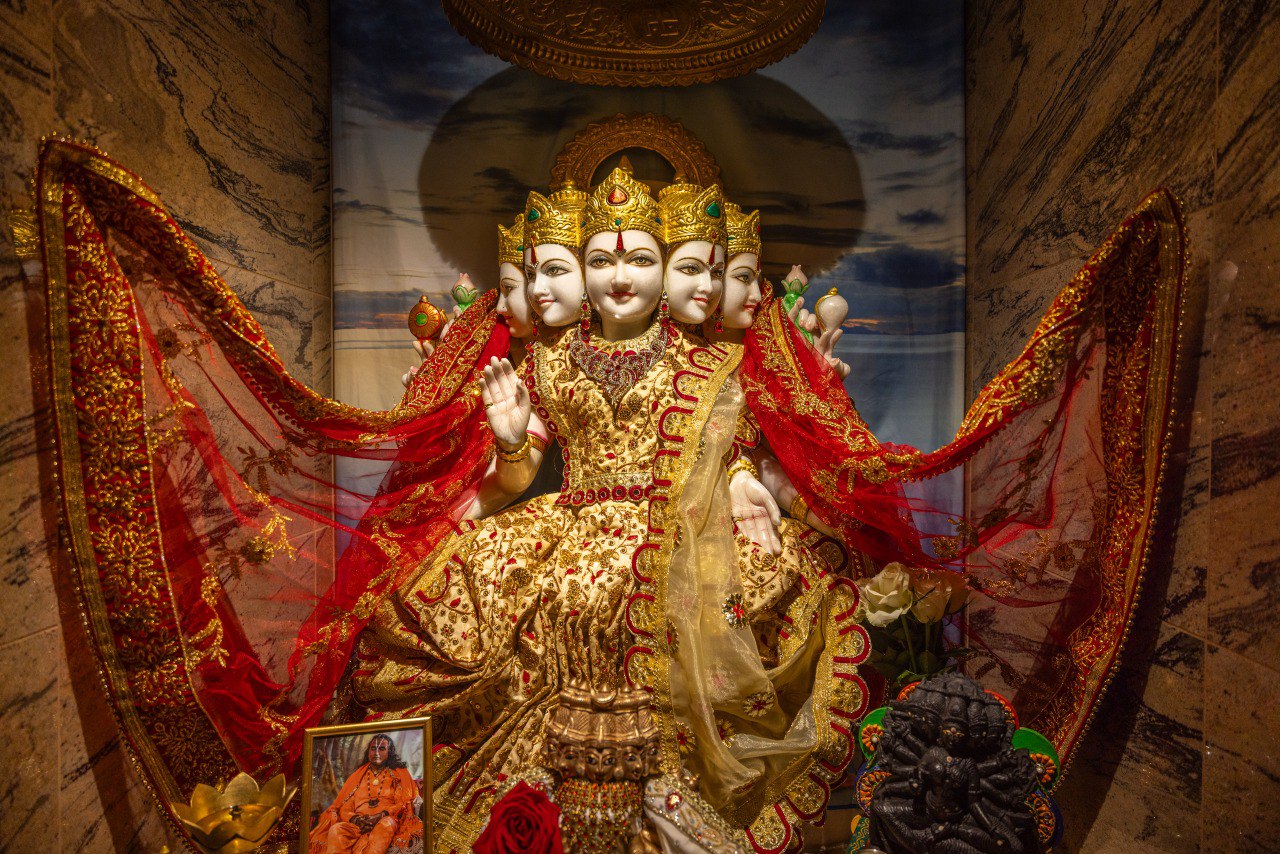
Gayatri Devi`s Lilas
Gāyatrī-devī, a radiant aspect of the Divine Mother, is revered as the source of wisdom in Hindu tradition. As the divine origin of the Gāyatrī-mantra, She embodies purity, clarity, and higher learning.
July 2025
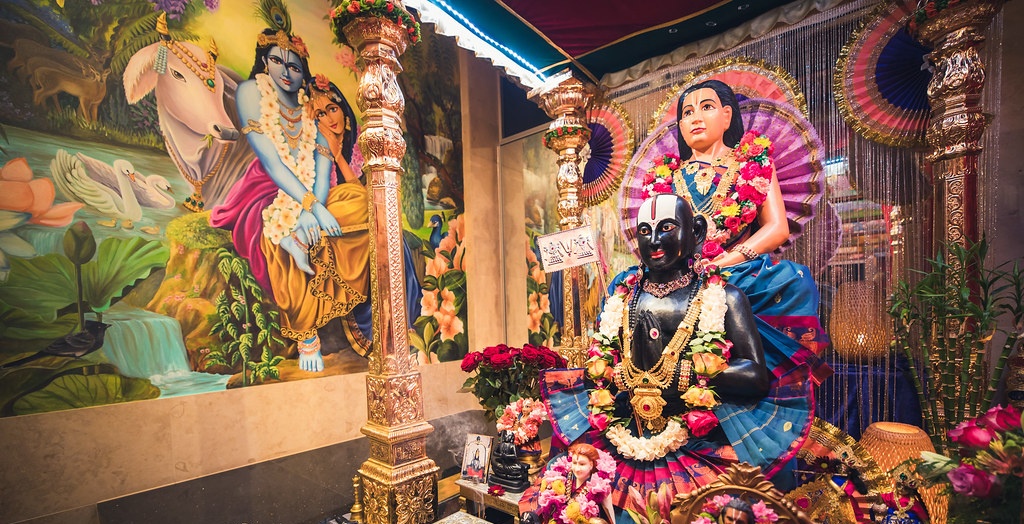
The Masters`s Lilas
At Shree Peetha Nilaya, The Masters— Śrī Rāmānujācārya, and Mahāvatāra Bābājī —are deeply cherished by devotees. Their lives of selfless service and deep devotion continue to inspire us.
May 2025
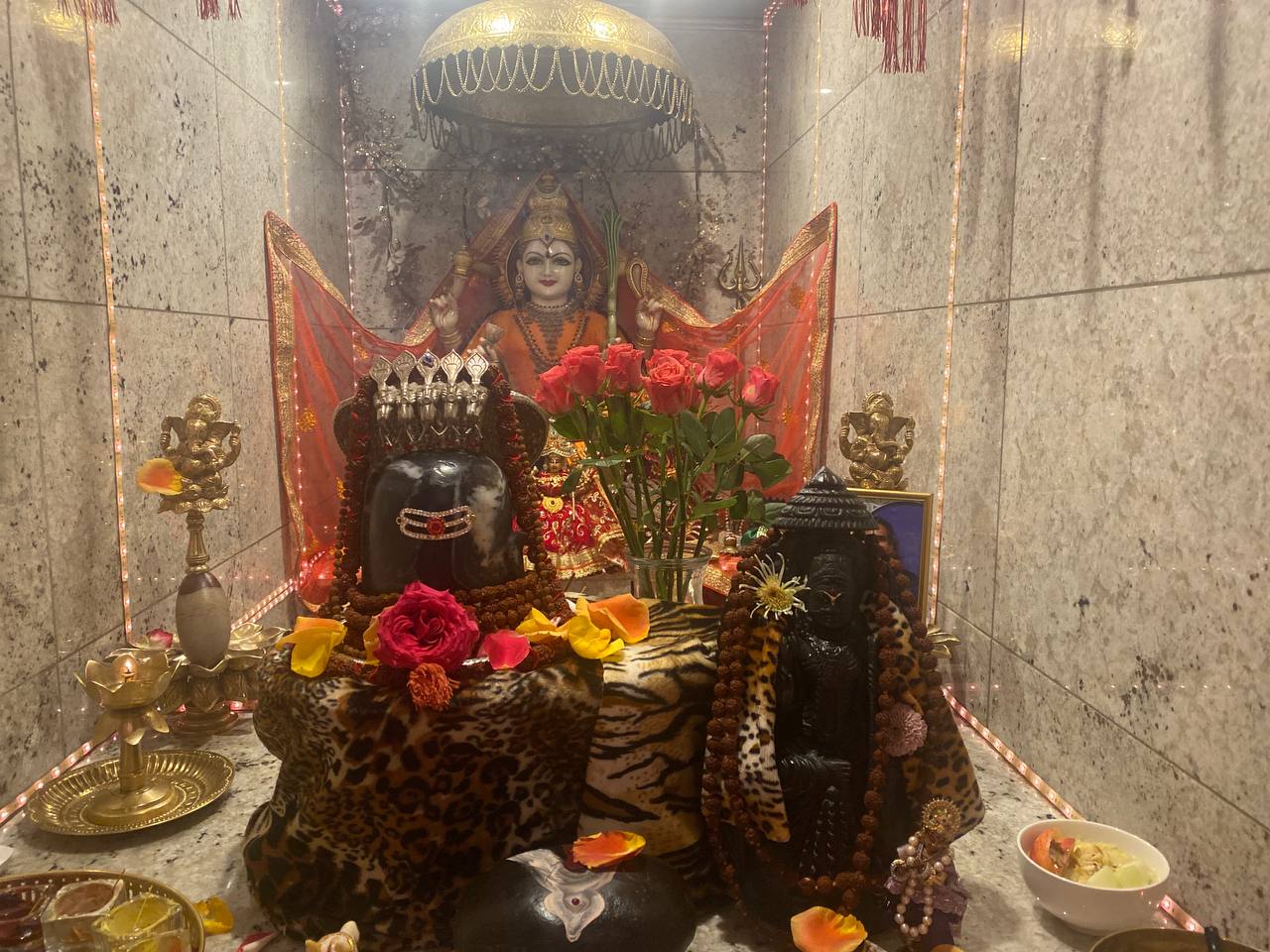
Shiva & Kamakshi Devi`s Lilas
Lord Śiva, one of the Trimūrti, embodies love, service, and devotion, holding a special place in the hearts of his devotees. His divine counterpart, Kāmākṣī-devī, a powerful form…
March 2025
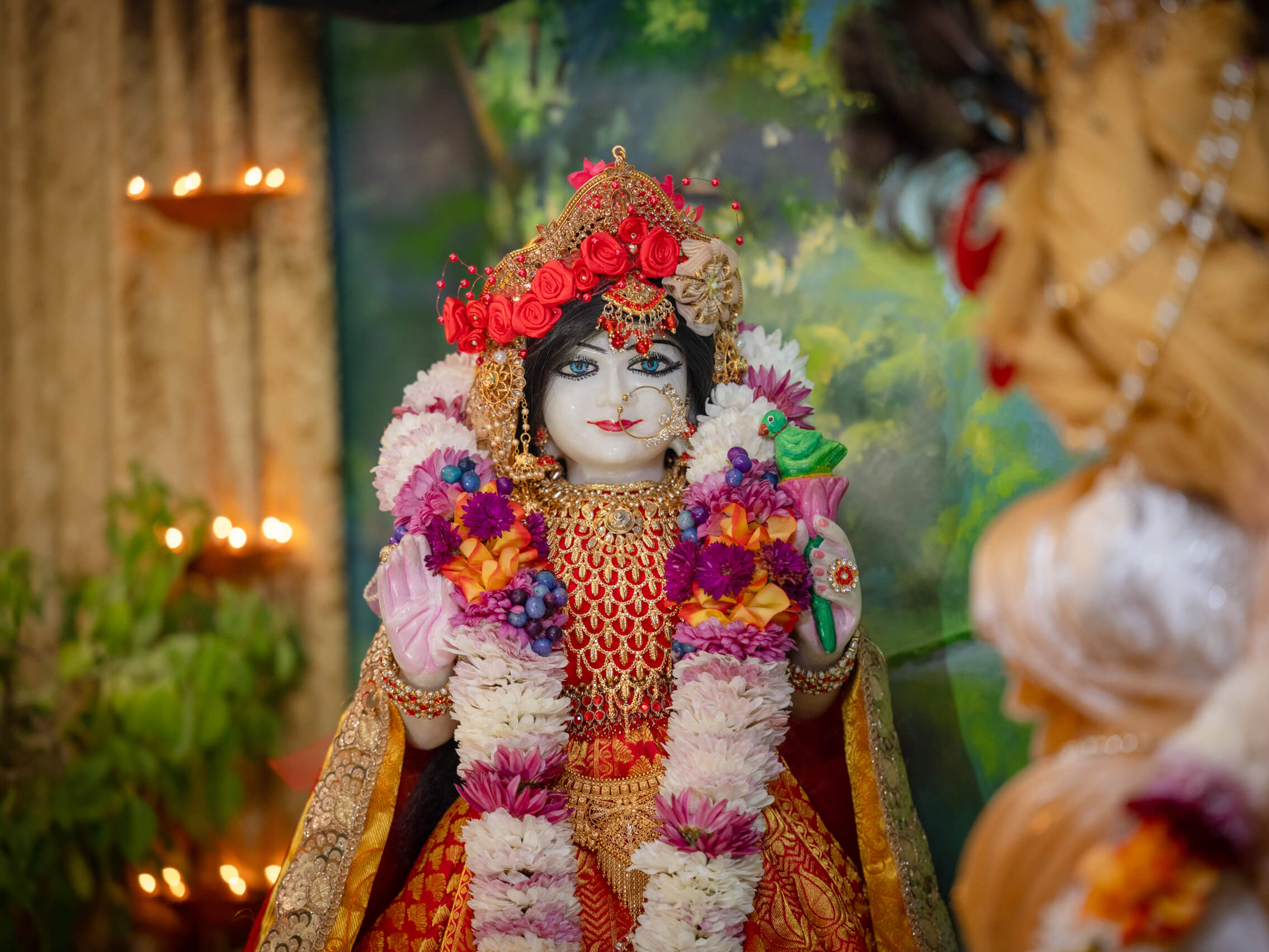
Tulsi Devi`s Lilas
Tulsī-devī is more than a plant—She is a living presence of love and devotion that touches the hearts of all who serve Her.
January 2025
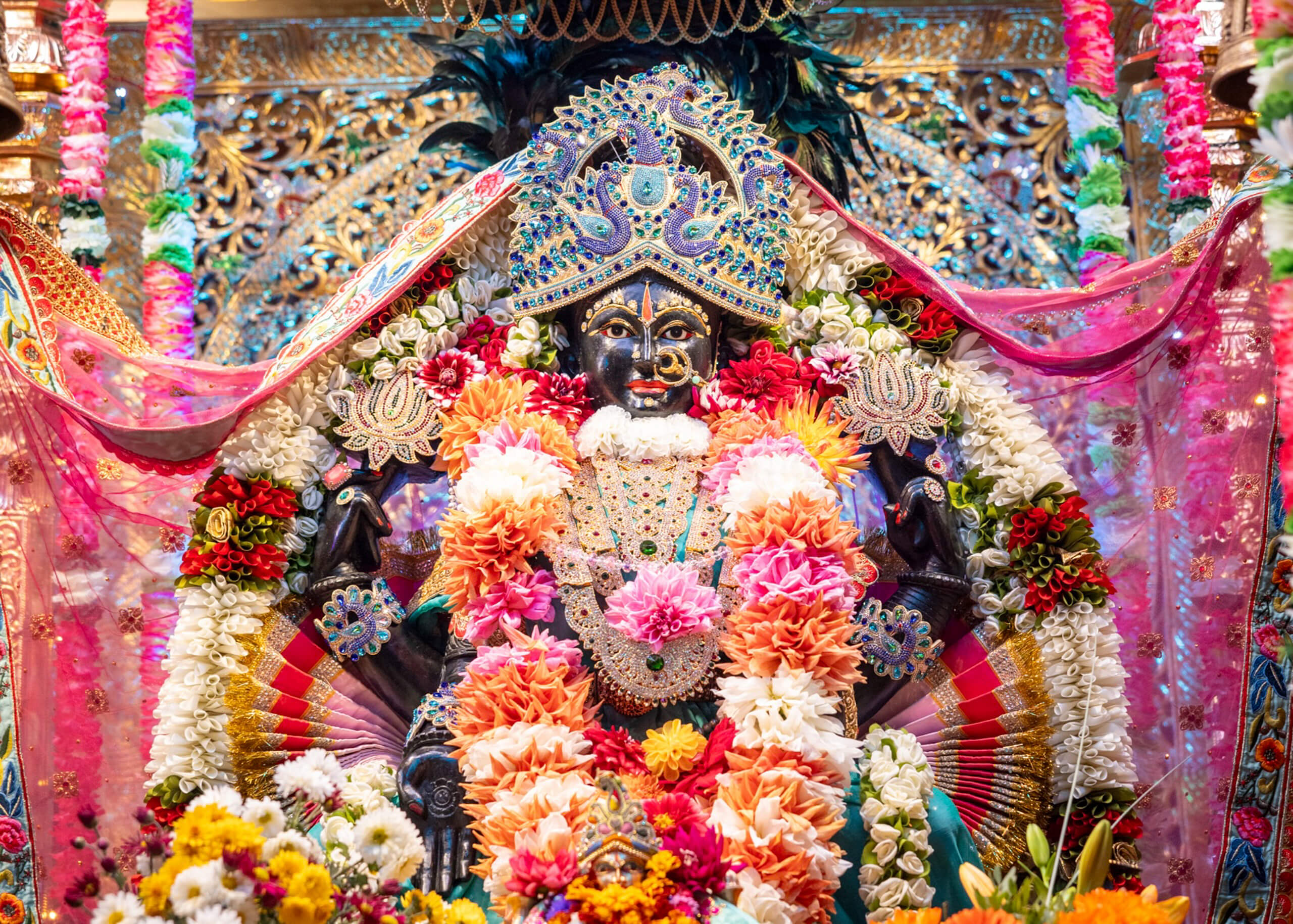
Maha Lakshmi`s Lilas
Maha-Lakshmi, the beloved wife of Lord Narayana, fills our lives with blessings, peace, and kindness.
November 2024
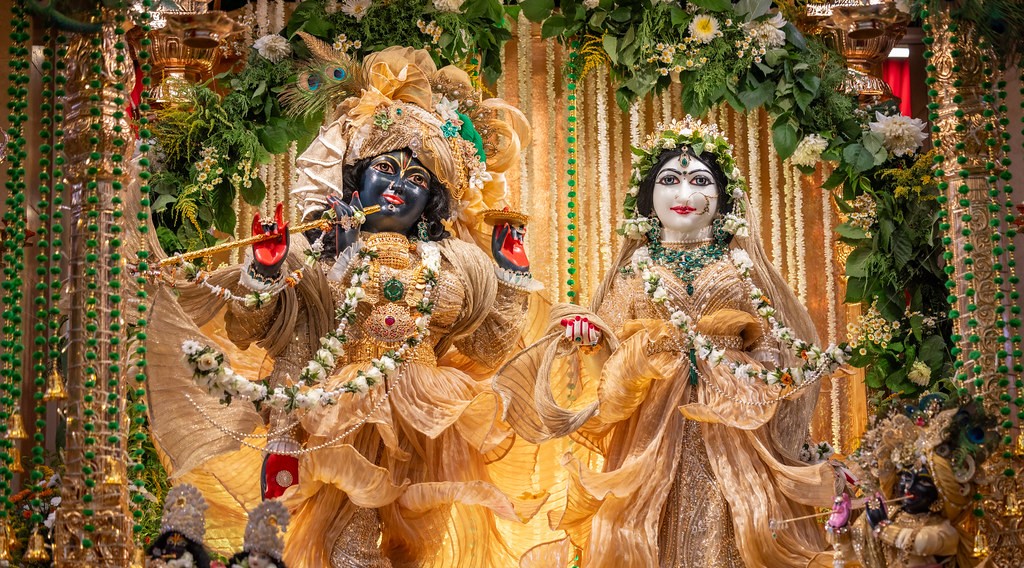
Radha Krishna`s Lilas
Radha and Krishna, residing in the Bhutabhrteshwarnath Mandir at Shree Peetha Nilaya, were lovingly named ‘Kripanidhe’ by Guruji, meaning ‘the ones who are full of mercy and grace’.
October 2024
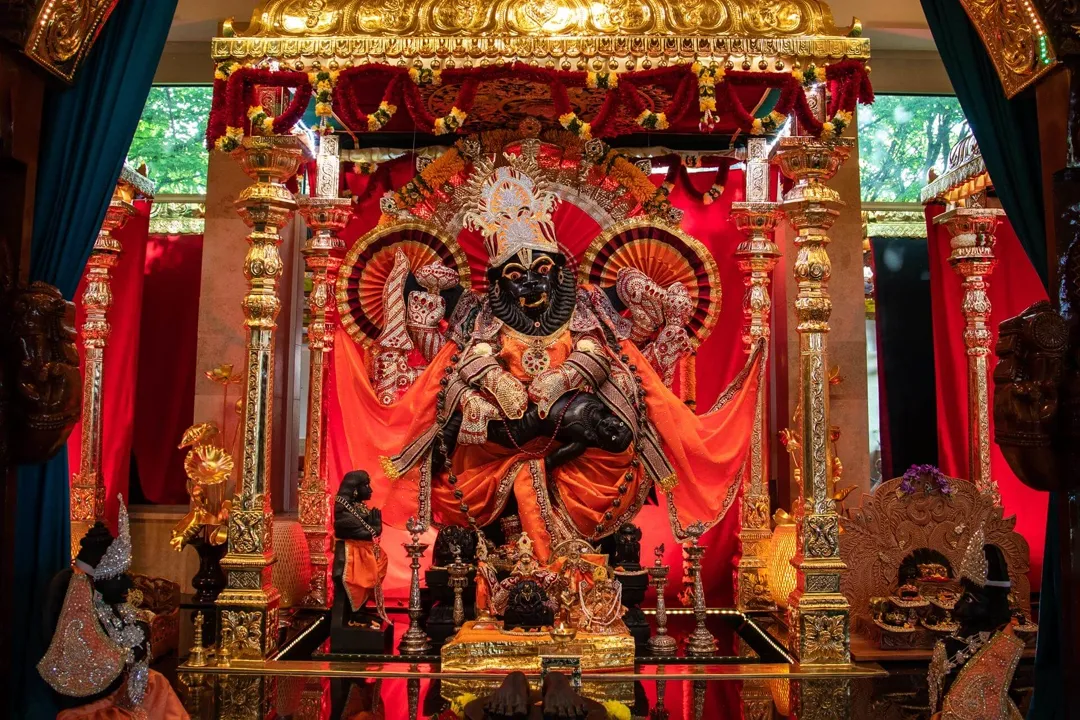
Lord Narasimha`s Lilas
At the Bhutabhrteshwarnath Mandir in Shree Peetha Nilaya, Lord Narasimha, who is both fierce and gentle, is not just respected but also truly loved by His devotees.
September 2024